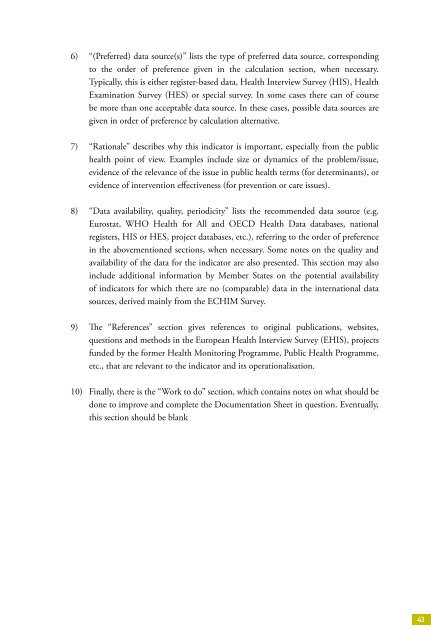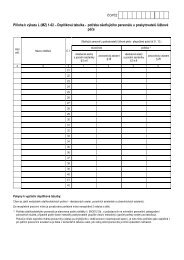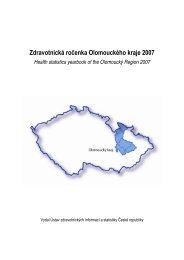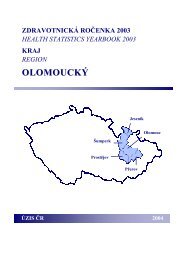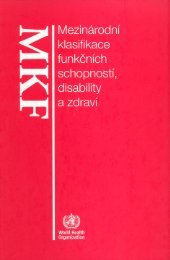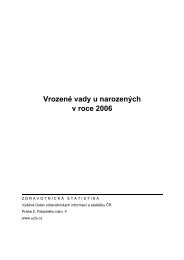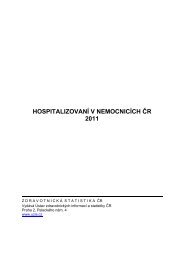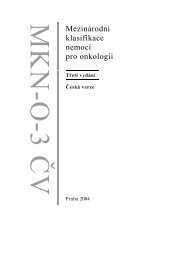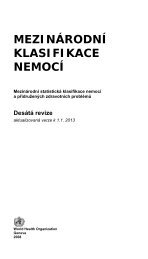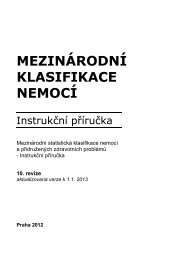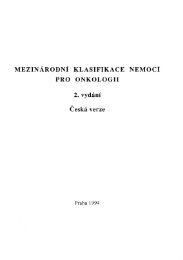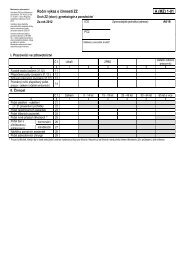ECHIM Final Report
ECHIM Final Report
ECHIM Final Report
Create successful ePaper yourself
Turn your PDF publications into a flip-book with our unique Google optimized e-Paper software.
6) “(Preferred) data source(s)” lists the type of preferred data source, corresponding<br />
to the order of preference given in the calculation section, when necessary.<br />
Typically, this is either register-based data, Health Interview Survey (HIS), Health<br />
Examination Survey (HES) or special survey. In some cases there can of course<br />
be more than one acceptable data source. In these cases, possible data sources are<br />
given in order of preference by calculation alternative.<br />
7) “Rationale” describes why this indicator is important, especially from the public<br />
health point of view. Examples include size or dynamics of the problem/issue,<br />
evidence of the relevance of the issue in public health terms (for determinants), or<br />
evidence of intervention effectiveness (for prevention or care issues).<br />
8) “Data availability, quality, periodicity” lists the recommended data source (e.g.<br />
Eurostat, WHO Health for All and OECD Health Data databases, national<br />
registers, HIS or HES, project databases, etc.), referring to the order of preference<br />
in the abovementioned sections, when necessary. Some notes on the quality and<br />
availability of the data for the indicator are also presented. This section may also<br />
include additional information by Member States on the potential availability<br />
of indicators for which there are no (comparable) data in the international data<br />
sources, derived mainly from the <strong>ECHIM</strong> Survey.<br />
9) The “References” section gives references to original publications, websites,<br />
questions and methods in the European Health Interview Survey (EHIS), projects<br />
funded by the former Health Monitoring Programme, Public Health Programme,<br />
etc., that are relevant to the indicator and its operationalisation.<br />
10) <strong>Final</strong>ly, there is the “Work to do” section, which contains notes on what should be<br />
done to improve and complete the Documentation Sheet in question. Eventually,<br />
this section should be blank<br />
43


